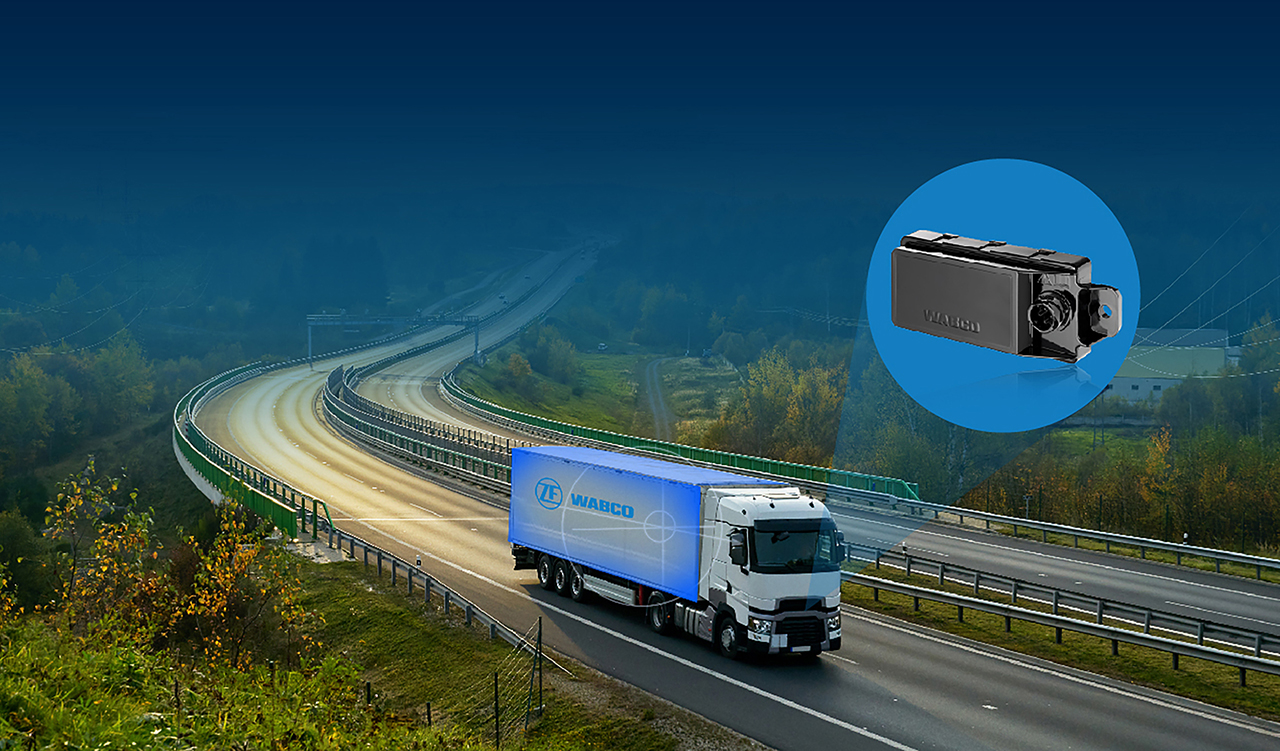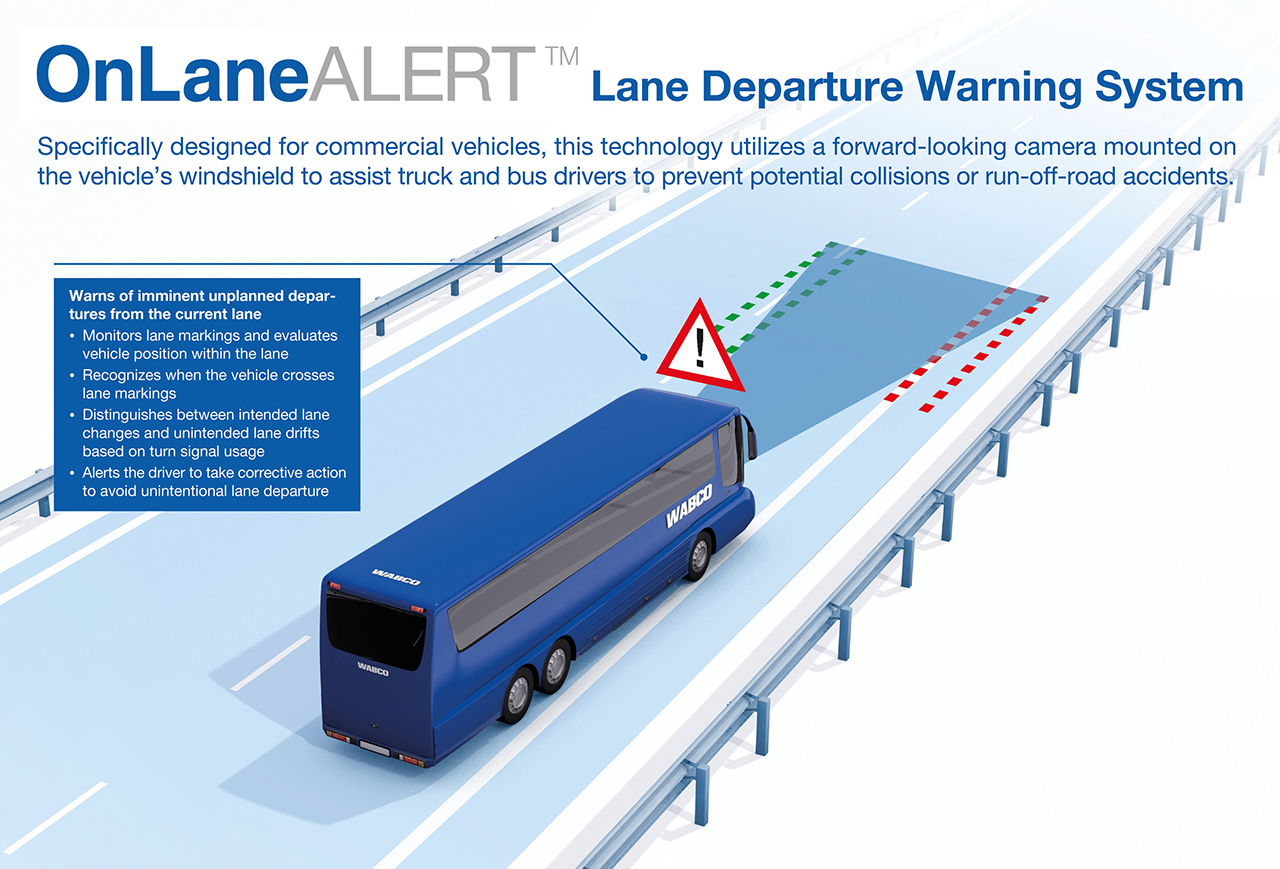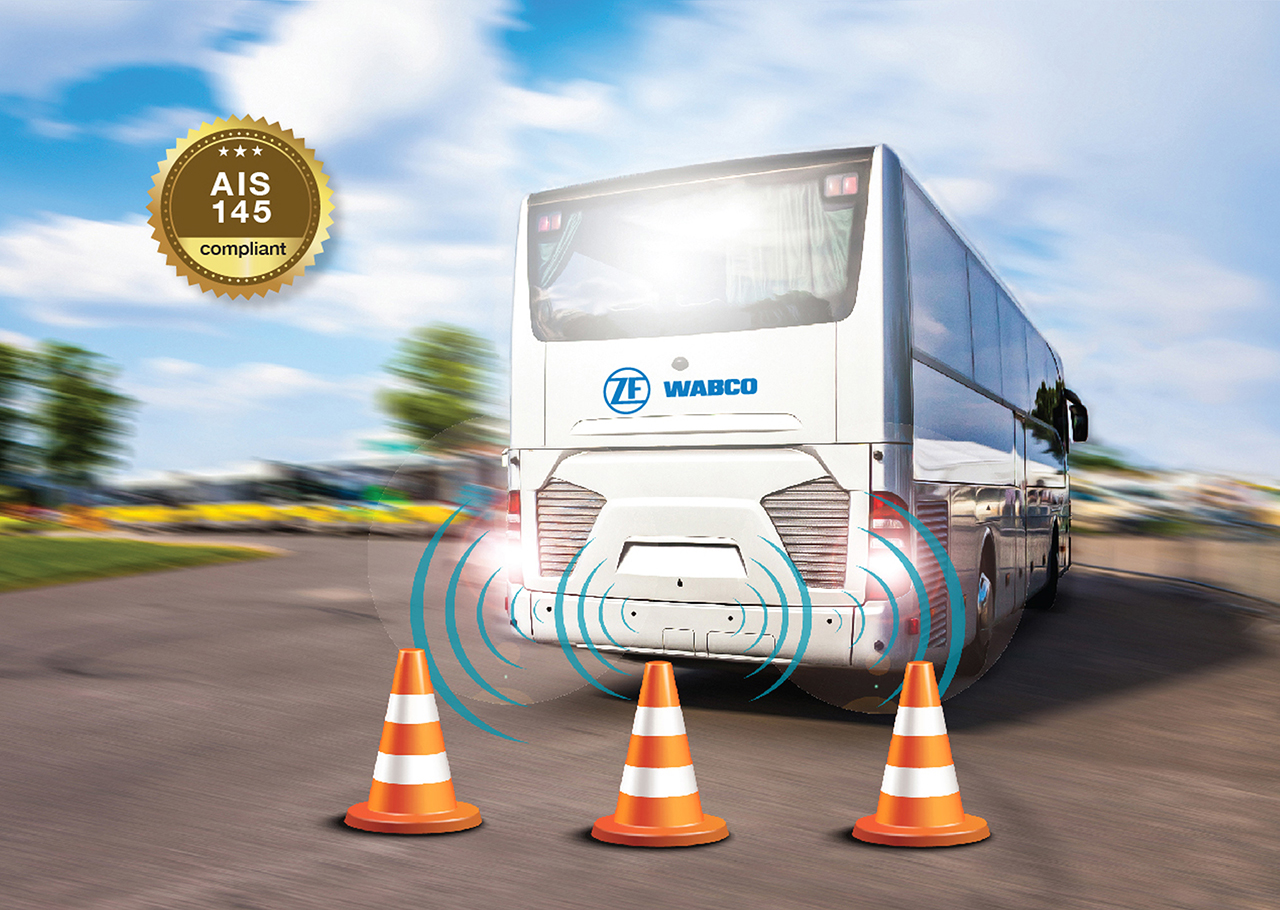Growing awareness about road safety – be it of people or cargo – among all the relevant stakeholders is a step in the right direction – towards achieving zero accidents. With the central government’s focused initiatives on formulating safety regulations, OEMs, fleets and technology providers are working towards achieving the same. ZF WABCO, a pioneer in the field of intelligent and integrated systems for the CV sector, is ready with new and advanced safety-first technological solutions. P. Kaniappan, Managing Director, WABCO India talks about the company’s paramount focus on safety solutions in the Indian context with MOTORINDIA’s N. Balasubramanian.

ZF WABCO has the distinction of launching ADAS as a solution in the Indian OEM segment. Having tested it for a few thousands of kilometers on Indian roads, the company continues to fine tune its portfolio. ZF WABCO is all about establishing safety as an essential requirement in the Indian context and its role is well-defined.
P. Kaniappan, Managing Director, WABCO India shares: “There is a growing awareness and emphasis on road safety across the country. The government, the OEMs and the fleets are increasingly pushing towards reducing accidents and ZF WABCO is continuously working to enhance safety awareness, train the drivers and fleets, besides offering appropriate advanced technologies such as Electronic Stability Control (ESC) and Advanced Driver Assistance Systems (ADAS).”
With the regulations becoming stringent to align with the global best-in-class standards, in place is a phased regulation roadmap defining the timelines for the application and the roll out of safety critical technologies and solutions – from ESC to ADAS.
This trend augurs well for ZF WABCO as the company is a ‘pioneer and technology leader’ in the ACE domains and has proven solutions that are in use in the CV sector in developed markets including in Europe, China and US.
Kaniappan reiterates: “ZF WABCO was among the first companies in India to launch ADAS (Collision Mitigation System and Lane Departure Warning System) with a leading OEM on their range of trucks and buses. The system is now being fine-tuned to complement the BS6 platform. We understand the needs of Indian customers and can provide the right product and technology solutions that are needed for the Indian market and fleets.”
Catering to Key Segments
ZF WABCO’s ADAS system is available as a standard OE fitment and is already available as a value-added feature from a leading CV OEM. The demand for ADAS retro-fit solutions is expected to arise initially from hazardous cargo carriers, long distance buses and the e-commerce businesses. The forward collision warning system will be one of the key requirements for the Indian market as it will help in reducing and preventing accidents.

Kaniappan adds: “There is a growing interest of both global and domestic consumers in ADAS solutions. We have a strong understanding of regional application conditions and fleet requirements and hence can customize our solutions to suit specific needs. We also have an in-house test track facility where these technologies can be tested, adapted to Indian requirements and homologated as well. In future, our connected vehicle technologies will also enable these systems to interact with each other, thus positioning us as a one-stop solution provider and a partner of choice for OEMs and fleets in India.”
Market Perception of ADAS
The Indian market is evolving rapidly and there is a paradigm shift in the mindset of OEMs and fleets alike towards safety. Currently the vehicle is utilized for a greater number of hours per day and the fleets are shifting their focus from initial cost to total cost of ownership (TCO), especially after BS6 introduction. The market for ADAS in India is expected to evolve in a phased manner starting from warning-based solutions to autonomous braking solutions.
He says: “Our portfolio of ADAS solutions includes Lane Departure Warning, Forward Collision Warning, Collision Mitigation, Adaptive Cruise Control, AEB for vehicles, AEB for pedestrians and cyclists, Blind Spot Warning, Lane Keep Assist, Evasive Maneuver Assist and higher levels of autonomous driving including platooning, and yard automation, amongst others.”

ZF WABCO echoes with the revived focus of the Government of India in reducing road fatalities. Formulation of regulations is being deemed to drive the adoption of ADAS in the market.
Kaniappan believes: “ADAS will be the next area of our focus from a safety perspective, and we are working closely with the regulatory bodies and sharing our global experience with the stakeholders here.”
He shares: “As early as 2015, we began partnering with OEMs on safety technologies starting with ABS and we understand that ADAS and ESC are crucial requirements for global fleets and companies that ferry hazardous goods, as zero accidents is one of their critical KPIs. E-commerce companies are also showing interest in this because, speed and the running time actually necessitates the use of these technologies to ensure safety of the vehicles, cargo and most importantly, drivers and road users.”
Advantage ZF WABCO
Almost 9 out of 10 commercial vehicles in India are fitted with ZF WABCO’s ABS systems. This proven technology is in use across many countries approved by major OEMs. The million kilometers or so worth of road data gathered in the last 6 years is being fine-tuned by ZF WABCO to be applied in India.
Kaniappan points out: “ZF is a leading supplier of camera-based ADAS solutions in the world and we manufacture our own camera and radar solutions. Our customers will receive a cost-effective global solution.”
The brand makes sure that the functional safety global standards are in line with the European technology regulation roadmap, which focuses on cybersecurity also.
When it comes to lane departure warning systems on the highways, ZF WABCO’s system has been tested across different lane markings. Conducted tests have shown that almost 93% of the times the system correctly detected the lane marking and provided the right alert.
Following that, the 2nd phase will involve their new radar- and camera-based solutions to detect pedestrians and initiate braking.
On the regulatory front, the ESC is expected to be made mandatory for commercial vehicles by 2023 across all M&HCV categories, and ADAS will follow suit.
Guiding Driver Perception
Simply put, driver-friendliness to safety technologies is the key to success in the market. Kaniappan observes that the fleets are concerned about getting experienced drivers to drive vehicles equipped with safety technologies. The company’s approach is to train the drivers and educate them on the advantages of these safety technologies using their extensive service support network. Till date, over 8000 drivers – mostly from the STUs – have received training and completion certificates. He adds that a specialized training course has been set up for drivers of hazardous cargo carriers in partnership with a leading multinational. Over 500 drivers have been trained as part of this initiative. So far all the drivers who have undergone this specialized training have reported a ‘zero accident’ rate.
Kaniappan shares an interesting observation: “One driver termed the ESC as ‘the hand of God’. He believes that when he lost control of the vehicle, an unseen power took over to stabilize the vehicle, thus avoiding a major incident. And that is exactly the role that electronic stability control. He reiterates the company’s vision for Next Generation Mobility built on the principals of ‘Zero Accidents, Zero Emissions’.
ZF WABCO is an active participant with ACMA on the safety regulation committee besides partnering a leading NGO in road safety for the ‘India against Road Crash’ initiative.

Looking to the Future
On the OEM front, a leading OEM is planning to launch ADAS in 2021 on some of their platforms, as per Kaniappan. Other OEMs are planning to add ADAS as a safety feature – preceding the regulation – in models to be launched in 2023.
Kaniappan adds: “Recently the Reverse Parking Assist System (RPAS) was launched for OEMs and fleets. Many vehicles that are fitted with the ABS have not fully leveraged the Hill Assist feature. The company will launch these technologies along with ADAS, so that by the time the regulation is in place, the market understands the context fully and is convinced about the value of these technological solutions.”
In a nutshell, the openness of OEMs to adopting new technologies to keep their uptime high and minimize or eliminate accidents is transparent. And that is how ZF WABCO’s safety-first technologies are garnering a big support!